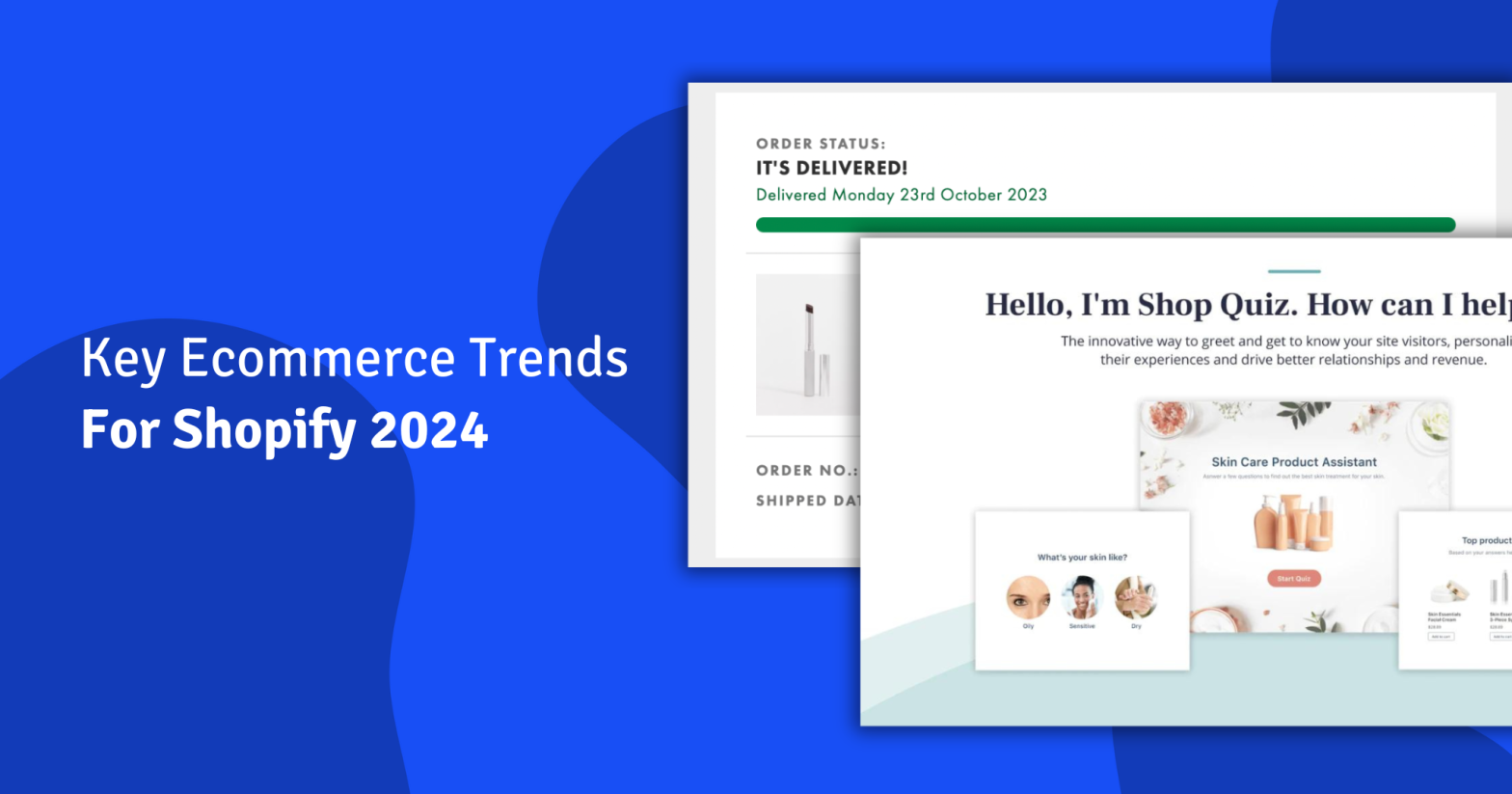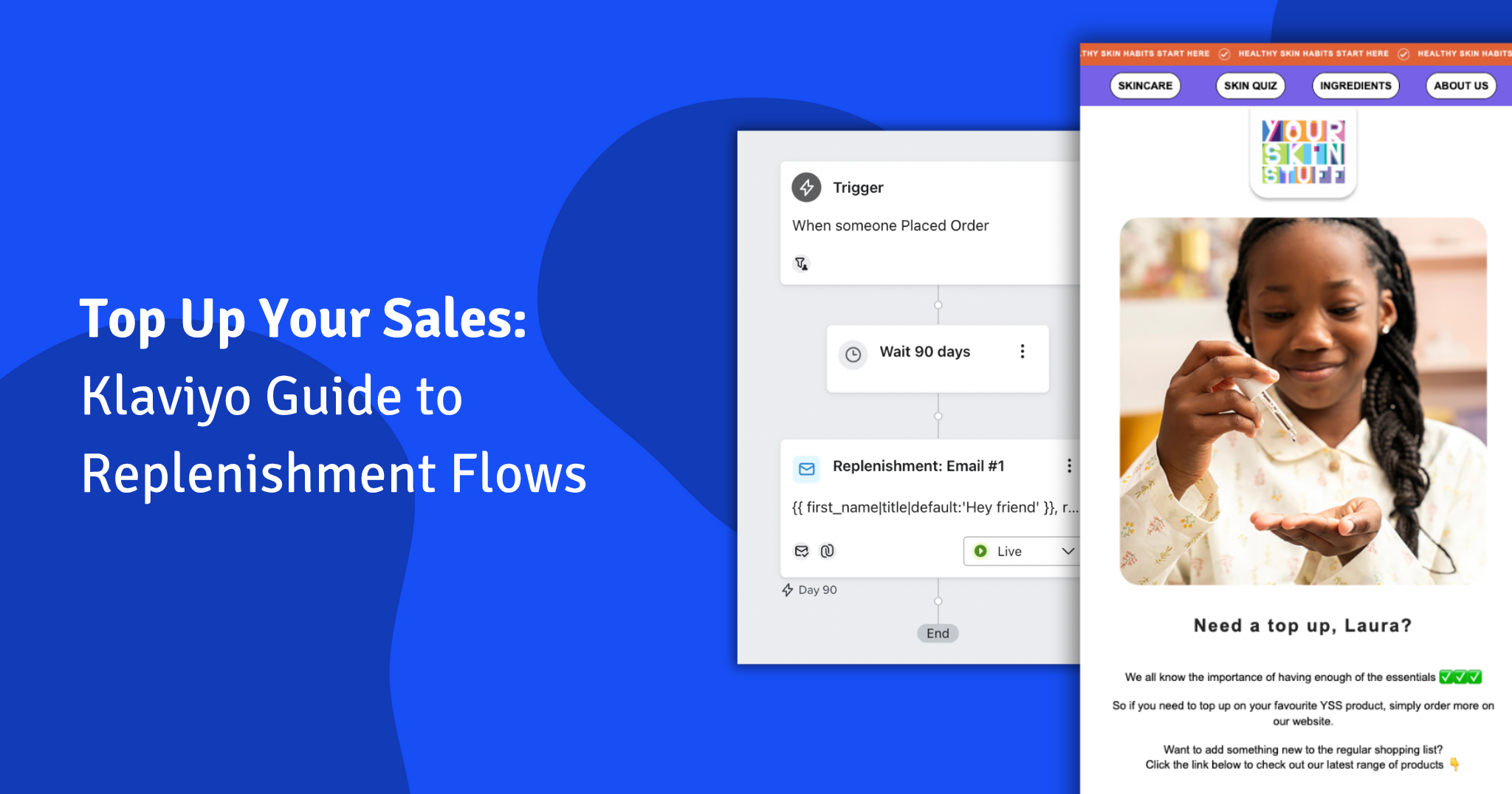As we venture further into 2024, the ecommerce landscape is undergoing a transformation that’s as dynamic as our weather.
With the digital marketplace evolving at breakneck speed, brands are finding innovative ways to meet and exceed the expectations of the modern consumer. We want to explore a few of the pivotal trends we have seen shaping ecommerce in 2024. We will be focusing on personalisation, authenticity, mobile-first design, and the shipping.
This year, it’s all about getting personal, keeping it real, thinking mobile-first, and delivering goods faster than ever before. Let’s break down these trends with some practical examples and top tips to help guide you.
1. The Art of Personalisation
In an era where choice is abundant, personalisation is becoming the beacon that guides consumers through the digital marketplace. It’s no longer about catering to the customer in front of you; it’s about anticipating the needs of the customer of tomorrow. It is offering the real world experience they expect in store online.
Using platforms like Octane and Klaviyo, brands are now predicting future desires, crafting bespoke email journeys, and delivering personalised onsite experiences. It is now time to imagine a world where your store knows what your customers need before you do – welcome to the future of personalisation.
Some Examples
- Using platforms like Octane AI for quizzes that guide product recommendations. Tip: Incorporate interactive quizzes on your site to gather insights directly from your customers, from what they like.

- Example: Leveraging Klaviyo for segmented email marketing campaigns based on customer behaviour. Tip: Create email segments based on purchase history and browsing behaviour to send tailored recommendations.
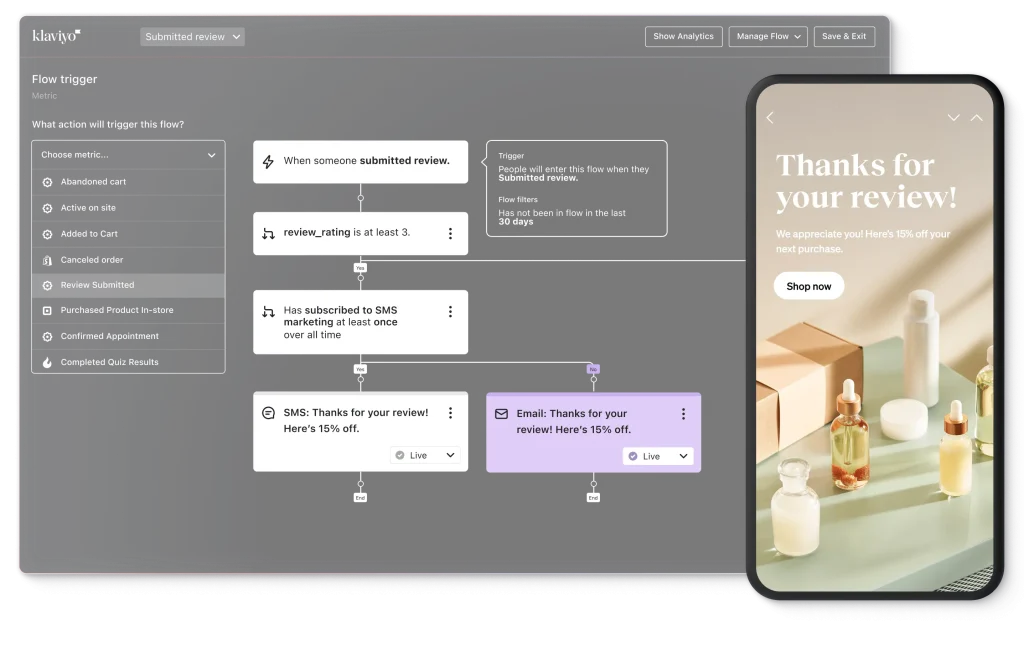
2. The Authenticity Imperative
As we navigate the bustling streets of social commerce, authenticity emerges as the cornerstone of consumer trust. In a marketplace awash with options, the genuine voice of a brand stands out like a beacon in the fog. Leveraging user-generated content, embracing the power of micro-influencers, and showcasing real customer reviews are more than strategies; they’re essentials. Authenticity isn’t just about being real; it’s about creating a foundation of trust in a sceptical digital world and offering a personal approach..
Some Examples
- Brands showcasing real customer stories and user-generated content on their homepage. Tip: Encourage customers to share their experiences on social media and feature this content on your site and in marketing materials. You can see an example of this on jewellery brand Lines and Currents‘ website here:

- Collaborating with micro-influencers who share genuine reviews and insights into your products. Tip: Partner with influencers whose audience aligns with your target market and who embody your brand’s values for authentic endorsements. See this example of The Glow Scientist promoting a skincare brand for an idea of how this might look:

3. A Mobile-First Metamorphosis
With smartphones becoming the shop windows of today, adopting a mobile-first approach is not just smart – it’s critical.
And the stats speak for themselves.
A staggering majority of consumers prefer browsing and shopping on their mobile devices. This shift demands a design philosophy that puts mobile experiences at the forefront. Quick checkout solutions like Apple Pay and optimisations for post-purchase account creation are transforming the mobile shopping experience into something as smooth as a well-brewed cup of tea.
Some Examples
- Implementing mobile-optimised design elements such as thumb-friendly navigation and accelerated mobile pages (AMPs). Tip: Ensure your website’s design prioritises mobile user experience, with easily navigable menus and fast loading times. See the website we built with Resourceible as an example:

- Offering mobile payment options like Apple Pay, Google Pay, and Shop Pay for speedy checkouts. Tip: Integrate with multiple mobile payment solutions to reduce checkout friction and abandon rates on mobile devices.
4. The Need for Speed: Delivery Expectations in 2024
The pace of life is accelerating, and so are expectations around delivery times. Gone are the days when waiting a week for a parcel was acceptable. In 2024, customers are clock-watching, with a significant portion expecting their goods to arrive in as little as two to three days.
While the ecommerce behemoths may have set the bar high, Shopify Shipping is levelling the playing field, offering merchants the ability to delight customers with next-day deliveries. It’s about managing expectations with transparency and efficiency, turning the anticipation of delivery into part of the joy of shopping online.
Some Examples
- Using Shopify Shipping to offer next-day delivery for local customers. Tip: Highlight next-day delivery options at checkout for customers in eligible locations to encourage conversion. You can see this on fashion retailer ASOS’ checkout page:
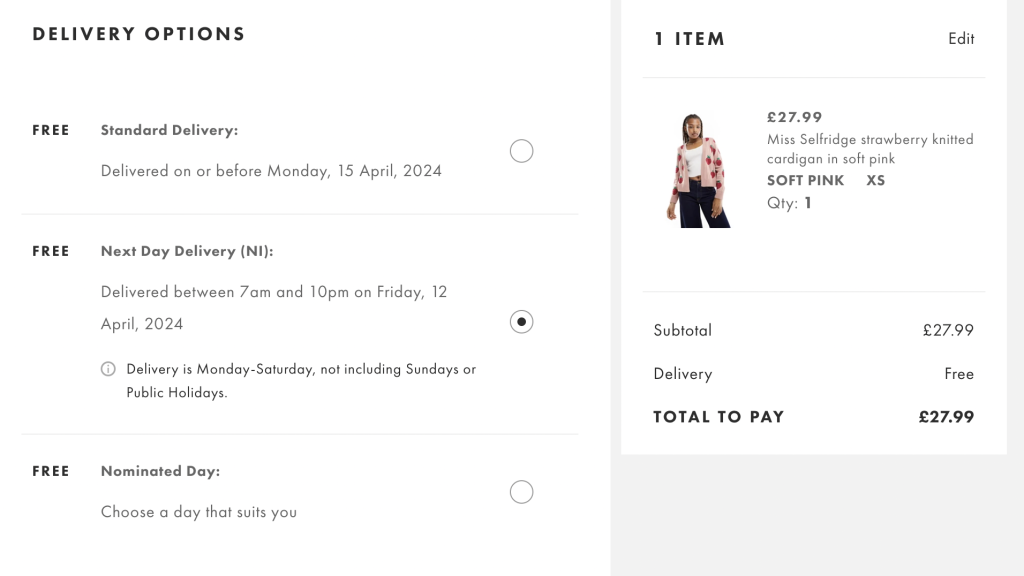
- Transparent communication about delivery times, including real-time tracking updates. Tip: Set clear expectations about delivery times at checkout and provide regular, automated shipping updates to keep customers informed. Again, let’s look at how ASOS offers an order status to keep customers in the know:
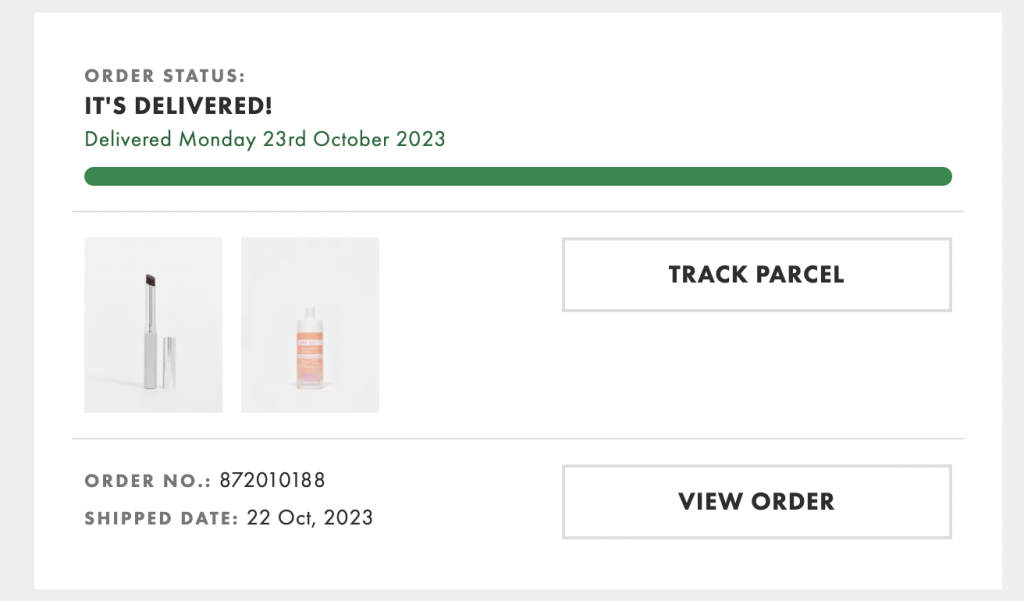
In Summary
The coming year promises a landscape where personalisation, authenticity, mobile-first strategies, and speedy deliveries are not just trends but expectations. As the digital marketplace continues to evolve, these elements form the pillars of a successful ecommerce strategy, blending technology, trust, and customer-centric design into a seamless shopping experience.
In 2024, the challenge for brands will be to navigate these trends adapting and innovating to meet the ever-changing demands of the consumer. The future of ecommerce is bright, and it’s personalised, authentic, mobile-first, and faster than ever. Strap in; we’re in for a thrilling ride.
The ecommerce landscape is all about creating a shopping experience that feels personal, authentic, tailored to mobile users, and meets the modern consumer’s need for speed. By focusing on these key areas, brands can not only meet but exceed customer expectations, paving the way for a successful and dynamic online presence.
For queries about Shopify and building your own e-commerce store, please contact us. We’re happy to help—contact us today.
If you are interested in further news and information about Shopify, consider signing up for our email newsletter, Shopify Insider.
